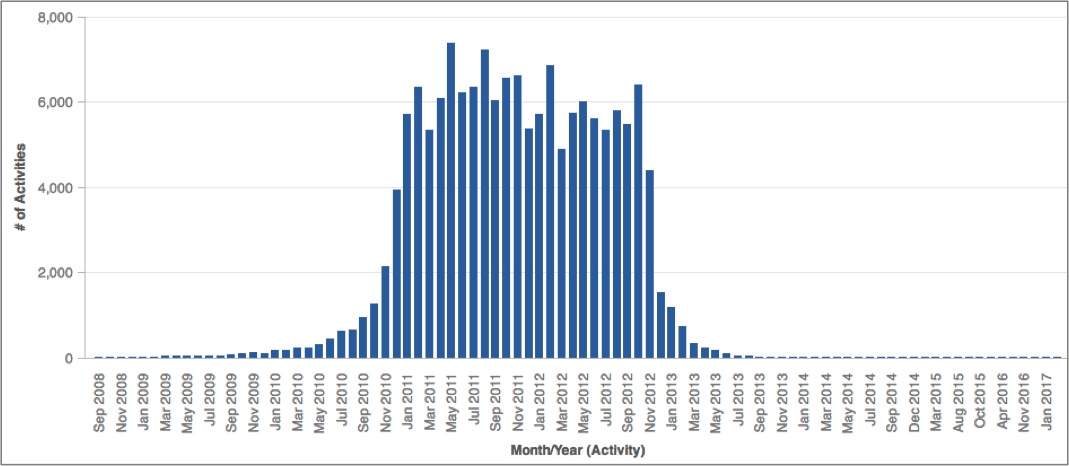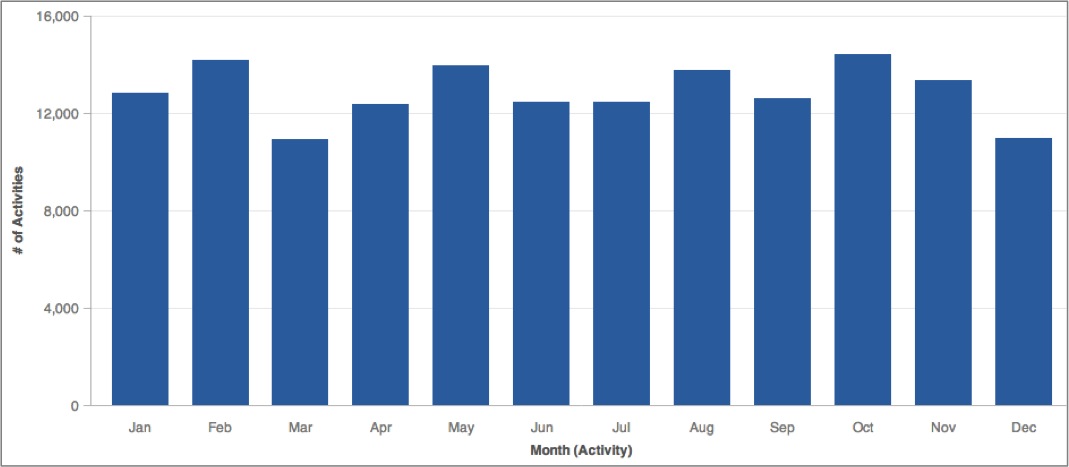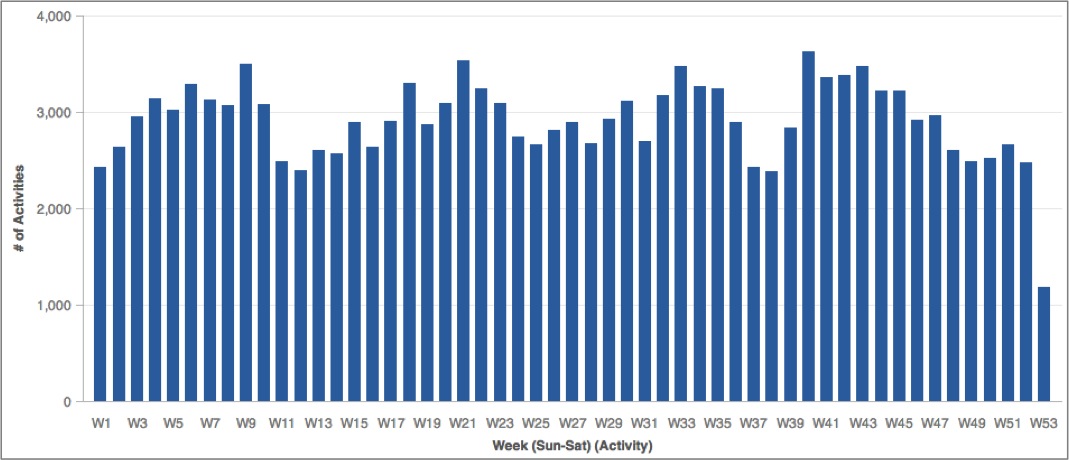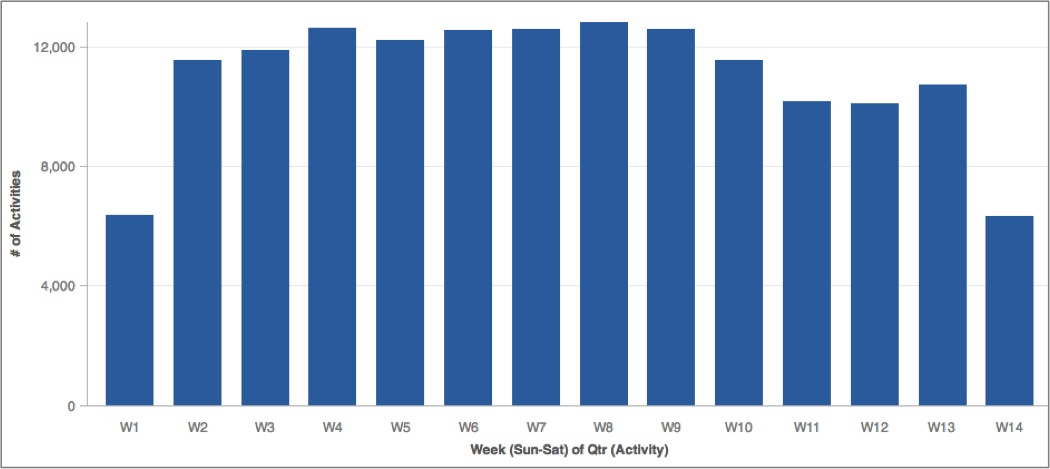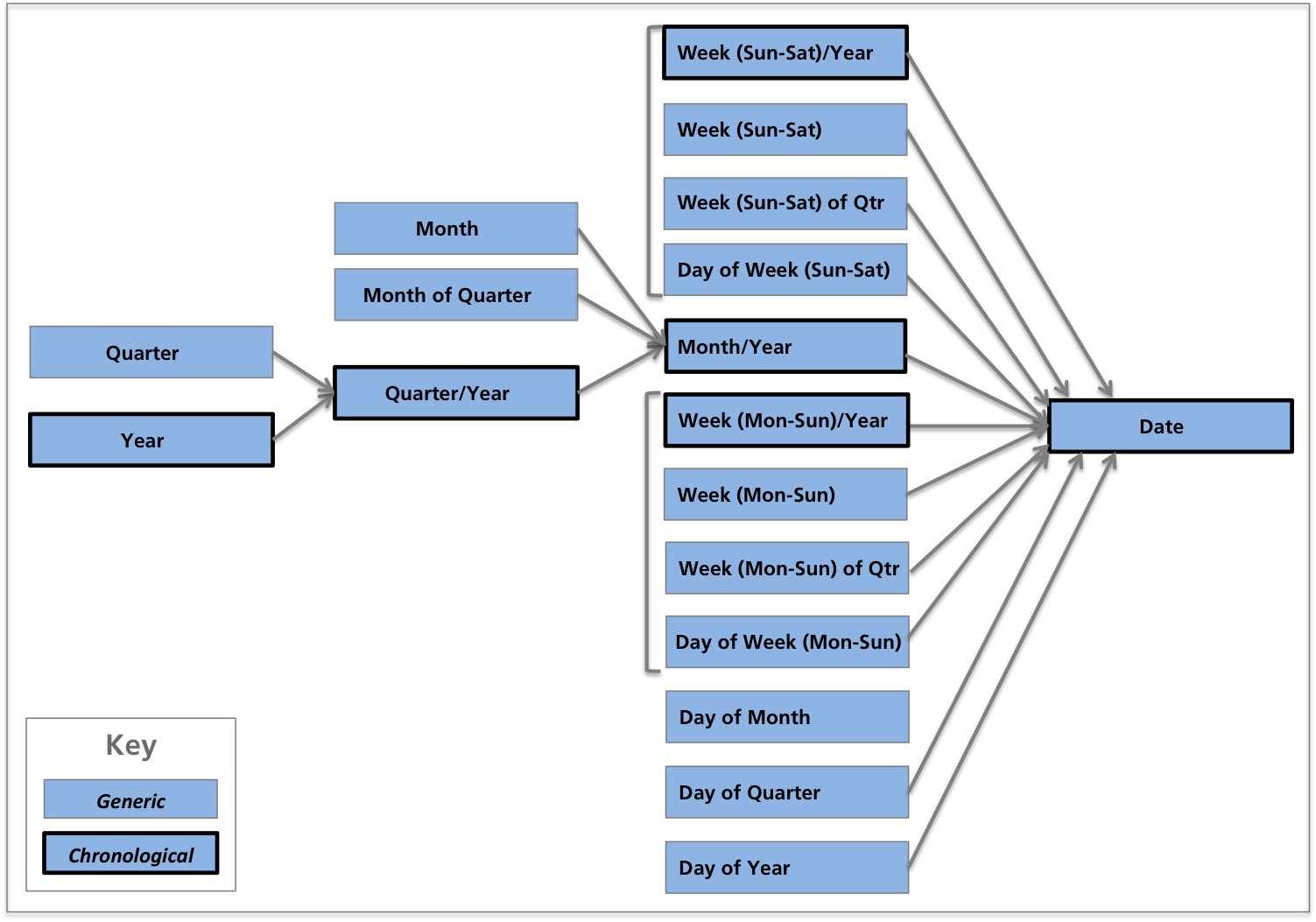Date Attribute Hierarchies
Date attributes are organized within a hierarchy in each date dimension. For details, see Date Attribute Reference.
Chronological vs Generic Data Hierarchies
Chronological date attributes categorize data with respect to particular past or future chronologically ordered dates and time intervals. Chronological attributes include Date, Week/Year, Month/Year, Quarter/Year, and Year. These attributes might have values such as Q2/2012, 08/25/2008, or January 2015.
The following chart shows a metric sliced by a chronological date attribute, Month/Year.
Generic date attributes contain categories that group together all data relating to the same recurring time intervals. Examples include all data relating to Mondays, all data relating to January of any year, or all data relating to the fourth quarter of any year. Labeling options for generic attributes may allow you to present values as named or numerical categories (April, or Apr, or M1/Q2, or M4).
The following chart slices a metric across the generic Month attribute. This means that the metric value associated with January, for example, represents an aggregation of all data from every month of January on record.
You could also slice the same metric across the generic Week attribute to help you look for patterns at the week level across multiple years of data.
Likewise, you could slice the same metric across the generic Week of Quarter attribute to help you look for trends within each quarter.
Date Attribute Hierarchy
The date attributes that belong to each dimension are extrapolated from a single date value with a day, month, and year value (for example, 09/07/2012). Attributes in the “date tree” are derived from the hierarchy that is outlined in the following picture:
In the picture above, Week/Year is not part of the greater chronological date attribute hierarchy. Week/Year is the only non-hierarchical chronological date attribute. It does not fit into the Year > Quarter > Month > Date hierarchy because weeks often span the beginning and end of a month (or quarter, or year).
